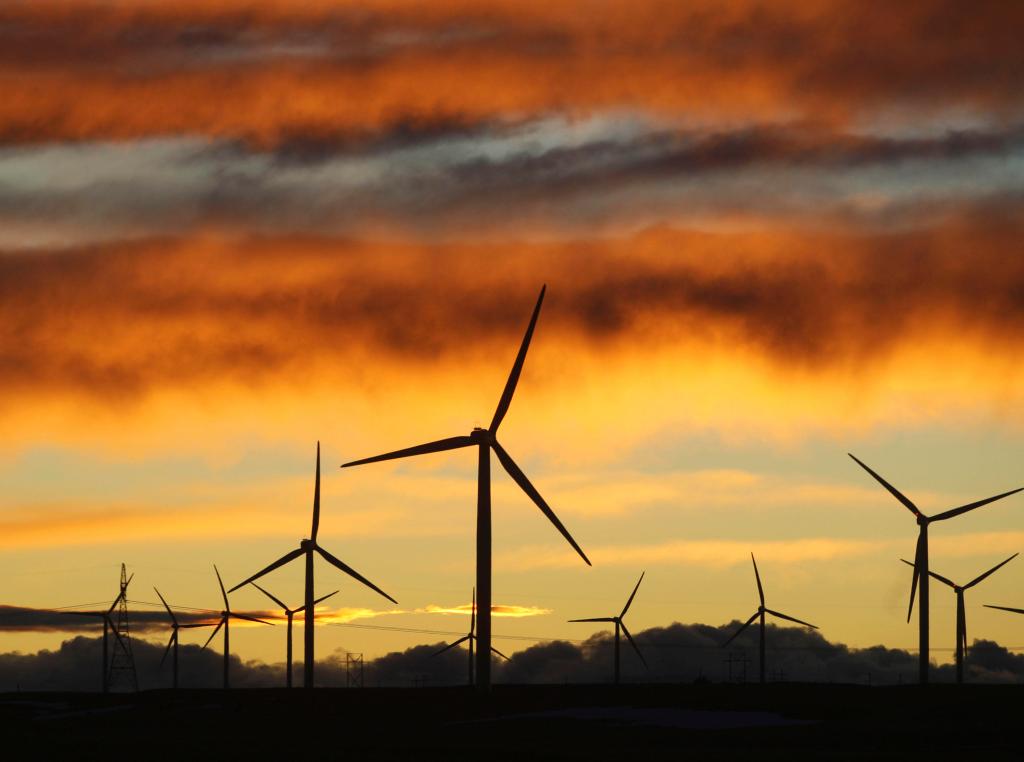WASHINGTON – New Jersey’s largest utility, PSEG, has already picked the location for a wind farm 16 miles off the state’s coastline. Energy giant NextEra is looking to double its $2 billion investment in wind nationwide.
At a time when the U.S. economy is desperate for jobs and investment in future growth, economists and business leaders say these projects — and billions of dollars in other investments in so-called ”clean energy” — are on hold in large part because of political stalemate in Washington.
With President Obama’s energy and climate proposals apparently bottled up in Congress, business leaders say they cannot tell what direction government policy will take on issues ranging from new energy taxes and tougher emissions standards for plants and vehicles to guaranteed markets for startup wind and solar power plants.
”It’s one thing to manage risk,” said Ralph Izzo, PSEG’s president and chief executive officer. ”It’s another thing to gamble. We’re not gamblers. And we’re therefore a bit paralyzed.”
And the logjam in the United States stands in sharp contrast with the situation in other countries that are major competitors now and into the foreseeable future — especially China and the European Union.
In these countries, investment is booming in the development and production of low-carbon-emission energy technology such as wind and solar power and improved electric power grids. Analysts say a big reason for that is clear decisions by host governments on the policy issues that will define the energy landscape in the future.
Last year, for the first time, China surpassed the United States in private clean-energy investment. More worrisome to U.S. investors: The Chinese, along with Japan and Korea, are poised to outspend the United States in public clean-energy support by 3 to 1 over the next several years.
”The investments being made in China,” said Tom Baruch, the veteran venture capitalist who heads CMEA Capital in San Francisco and serves on the Washington-based Council on Competitiveness, ”are just huge government investments that the venture capital industry couldn’t hope to match.”
China is also challenging an earlier U.S. lead in developing ways to burn coal while reducing emissions of the greenhouse gases that scientists say are a major factor in global warming.
At stake for Americans are thousands of new jobs — from low-skilled maintenance work to high-level engineering — that are expected to be created as a result of what the International Energy Administration estimates could be as much as $10 trillion in international spending on clean energy over the next several decades.
In part because of the bad economy, U.S. venture capitalists cut their overall clean-energy spending by half last year from a 2008 peak.
The Obama administration earmarked more than $80 billion in its economic stimulus to clean energy, including a variety of research ventures, home weatherization programs and manufacturing tax credits.
But to spur more private investment and job creation, administration officials, along with many executives and analysts, say the federal government must reassure Wall Street that the need for clean energy will continue to grow — and give utilities at least an idea of how much more expensive it will be to burn fossil fuels such as coal and gas in the future.
”The key has to be that you create a sustained demand” for clean-energy technologies, said Ethan Zindler, head of North American research for Bloomberg New Energy Finance, which tracks clean-energy investment globally.
The utility sector is increasingly anxious about what types of power will make economic sense in the coming decades — and how government regulation will affect that — according to an annual survey of industry leaders by the consulting firm Black & Veatch.
Black & Veatch runs computer models for utility clients in an effort to predict the impact of future regulations on energy investments. But in the current, uncertain policy environment, ”even the most sophisticated models grind to a halt,” said Bill Kemp, who leads the firm’s climate change initiative.
Florida Power and Light has plans to spend between $500 million and $1 billion a year on renewable power, including financing the Babcock Ranch solar plant near Fort Myers, said Lewis Hay III, CEO of the FPL Group, the utility’s parent company.
But ”that’s just not going to happen” until Congress passes a climate bill, Hay said.
Obama’s preferred energy bill would mandate greater use of renewable power nationwide and effectively raise the price of fossil fuels by limiting greenhouse gas emissions economy-wide through a so-called ”cap and trade” system.
It’s not a universally accepted panacea for the investment problem. Black & Veatch found utility industry workers oppose the House-passed version of Obama’s plan by 2 to 1.
Karen Harbert, who leads the U.S. Chamber of Commerce’s Institute for 21st Century Energy, said investors need to see more streamlined permitting processes and more predictable tax structures instead of a patchwork of clean energy incentives — and not necessarily cap and trade.
”Certainty,” she said, ”actually means simplicity.”At stake for Americans are thousands of new jobs — from low-skilled maintenance work to high-level engineering — that are expected to be created as a result of could be as much as $10 trillion in international spending on clean energy over the next several decades.
Copy the Story Link
Send questions/comments to the editors.



Success. Please wait for the page to reload. If the page does not reload within 5 seconds, please refresh the page.
Enter your email and password to access comments.
Hi, to comment on stories you must . This profile is in addition to your subscription and website login.
Already have a commenting profile? .
Invalid username/password.
Please check your email to confirm and complete your registration.
Only subscribers are eligible to post comments. Please subscribe or login first for digital access. Here’s why.
Use the form below to reset your password. When you've submitted your account email, we will send an email with a reset code.